Abstract
Handicapped individuals who have been taught spontaneous gesture requests often use only a small part of their vocabulary. Procedures to recover the unused part of this vocabulary have not been documented. This study was designed to identify procedures for increasing the proportion of gestures used spontaneously. Six mentally handicapped individuals served as subjects. After a baseline phase during which spontaneous gesture requests were reinforced, consequences were withheld for high-rate gesture requests. This led to an increase in different gesture requests. Although gesture requests did not return to baseline levels during a reversal condition, functional control was demonstrated by way of a multiple baseline across subjects. The absence of a reversal effect suggests enduring effects of the procedure.
Full text
PDF
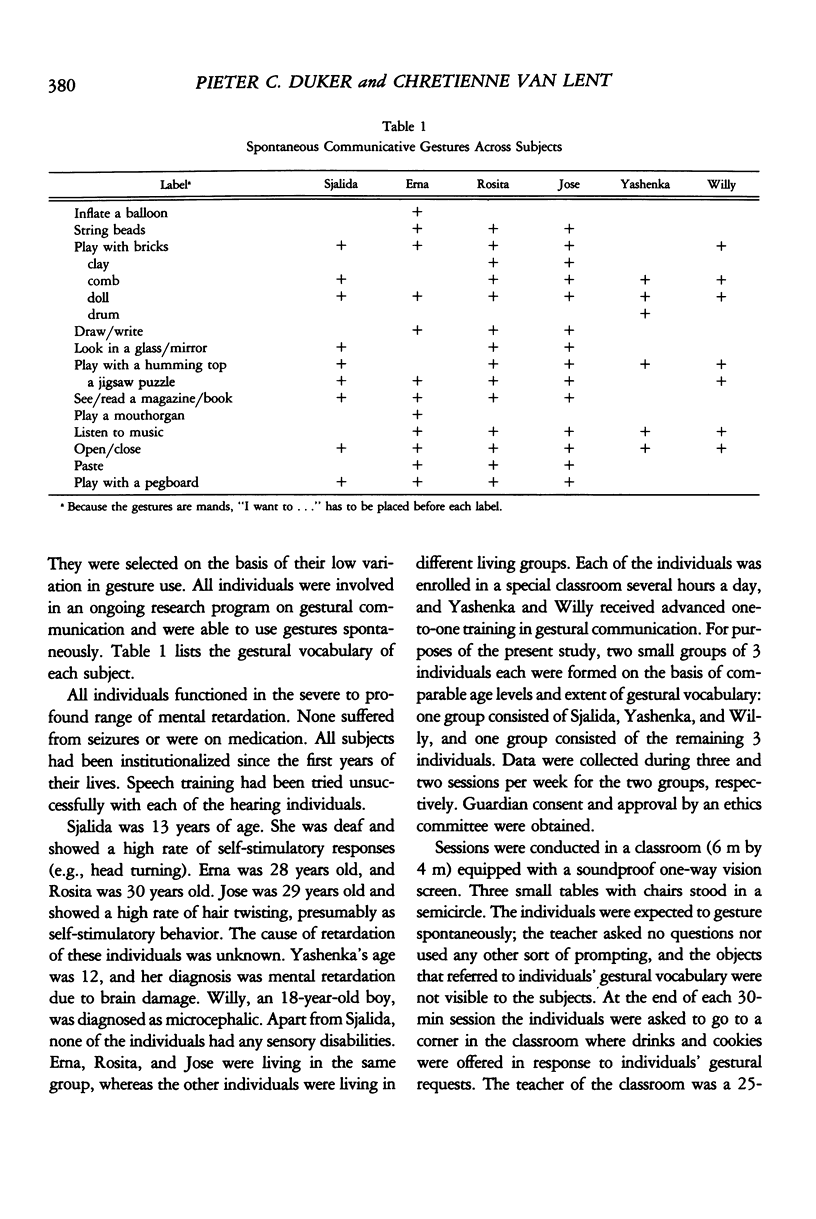
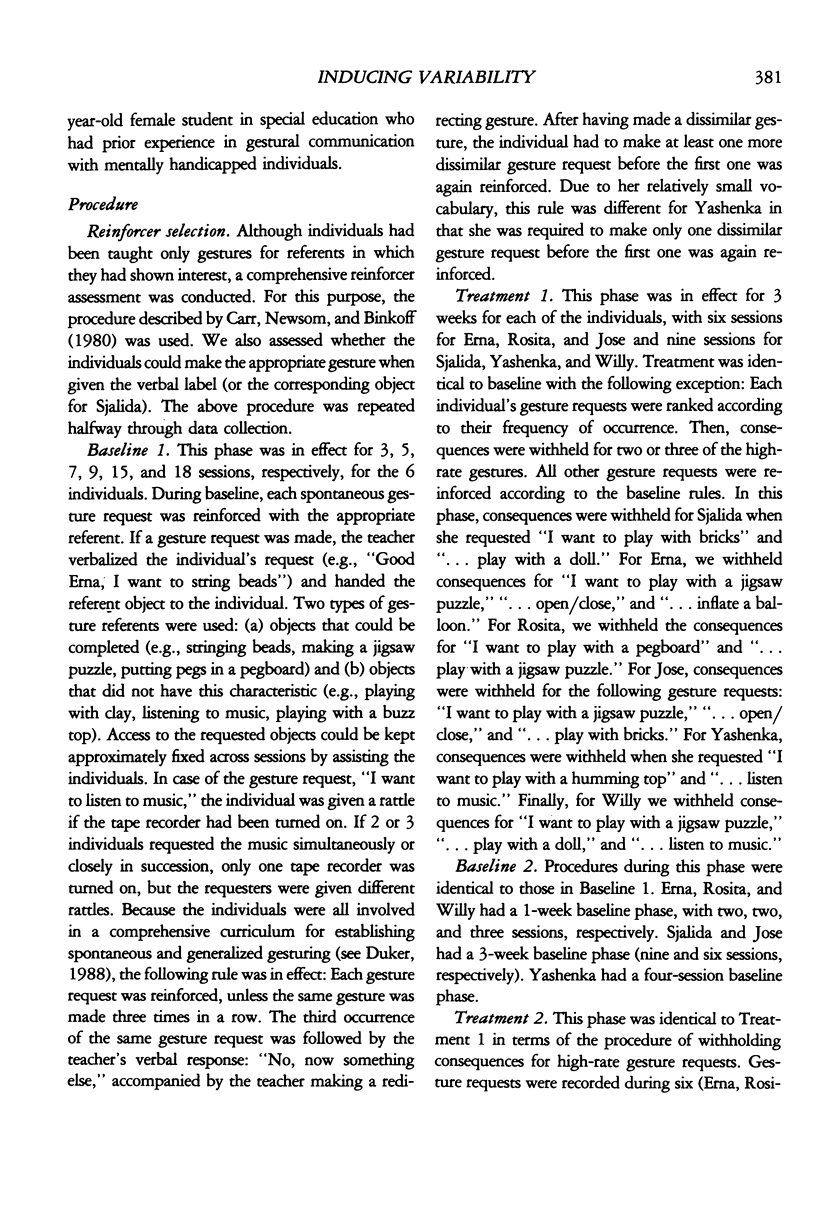
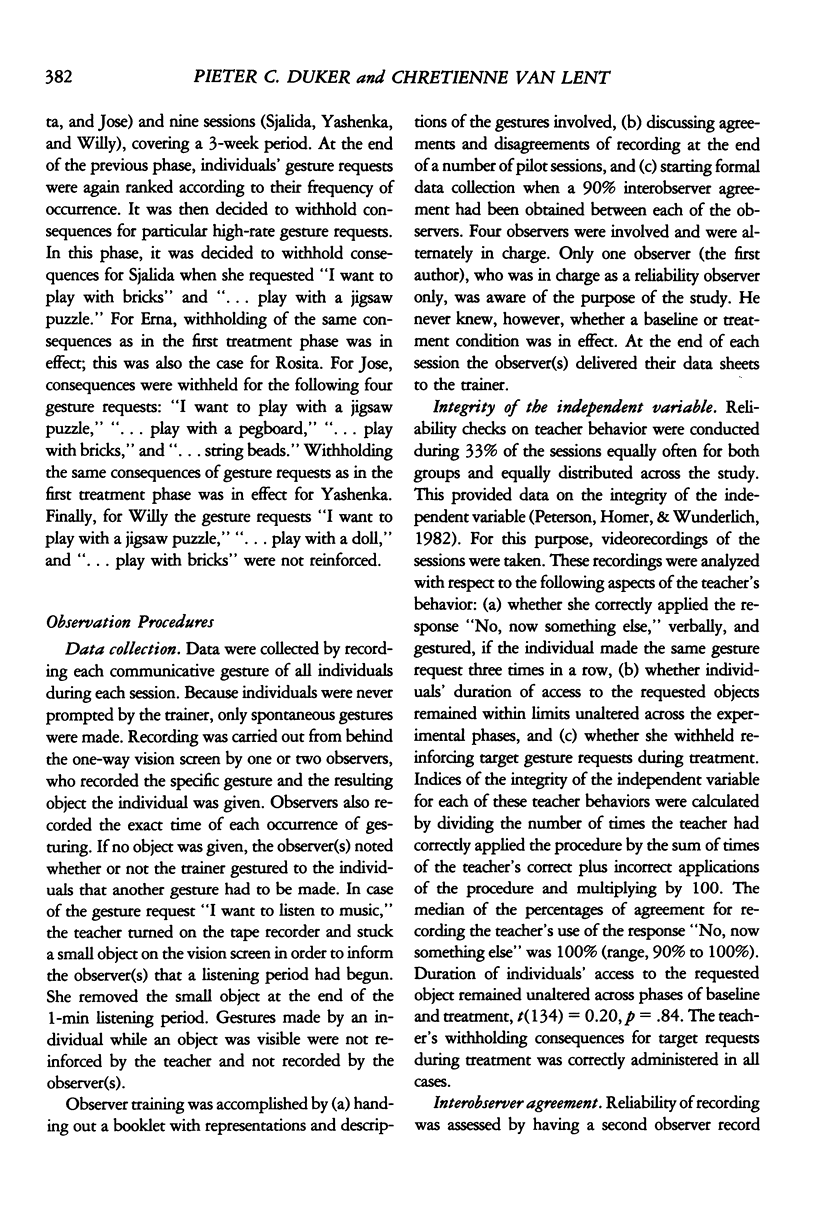
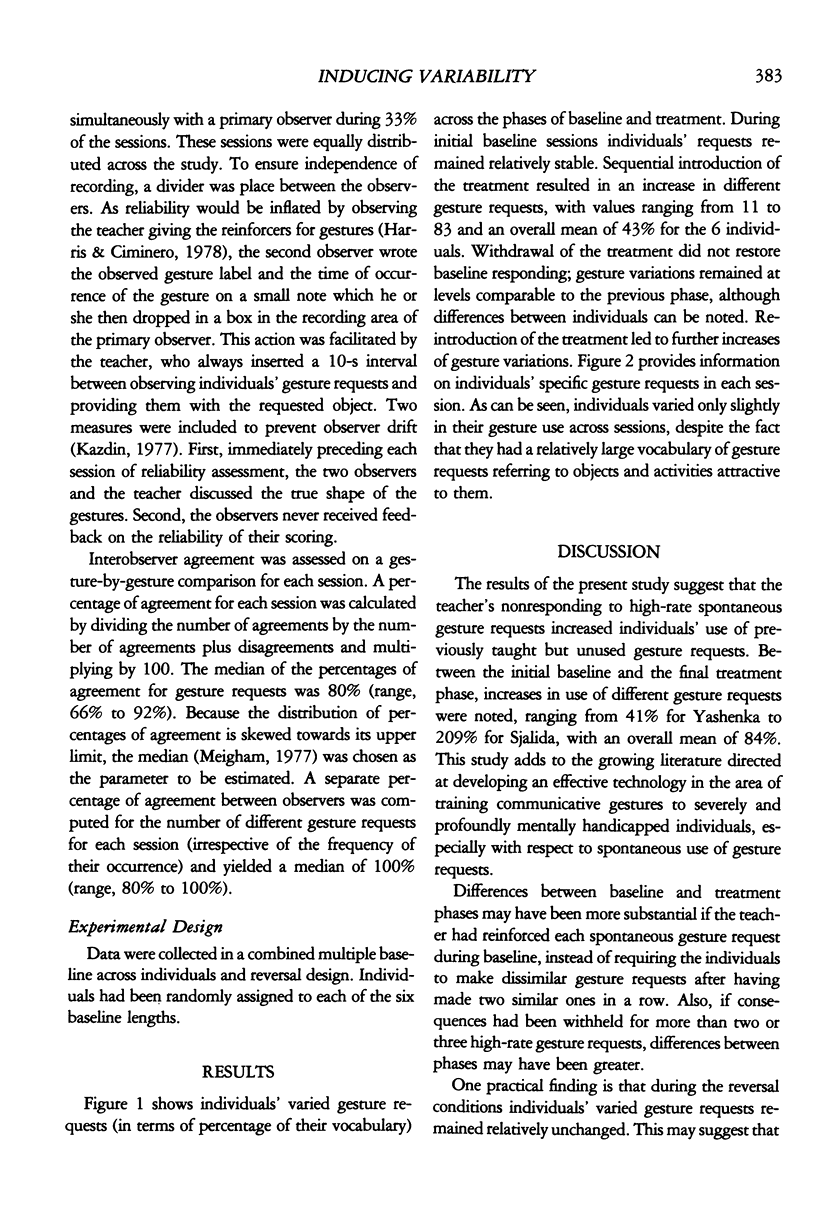
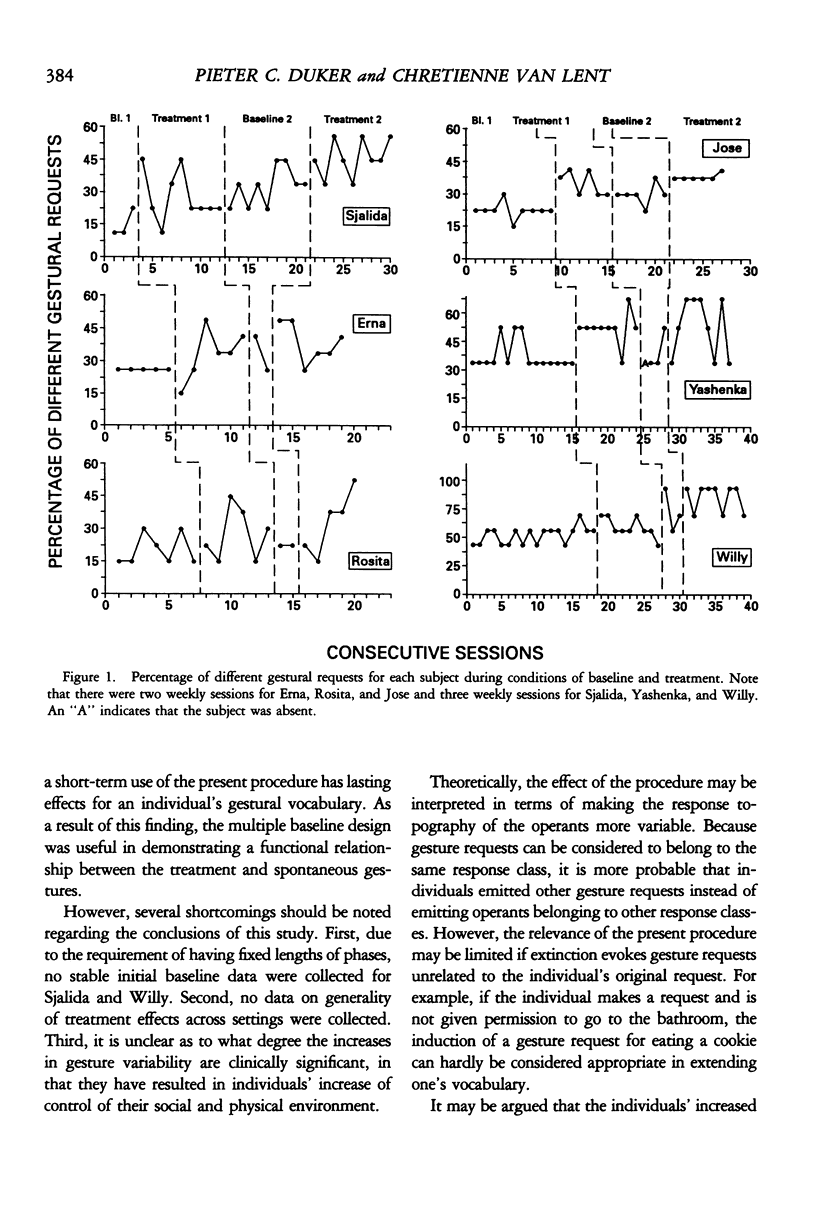
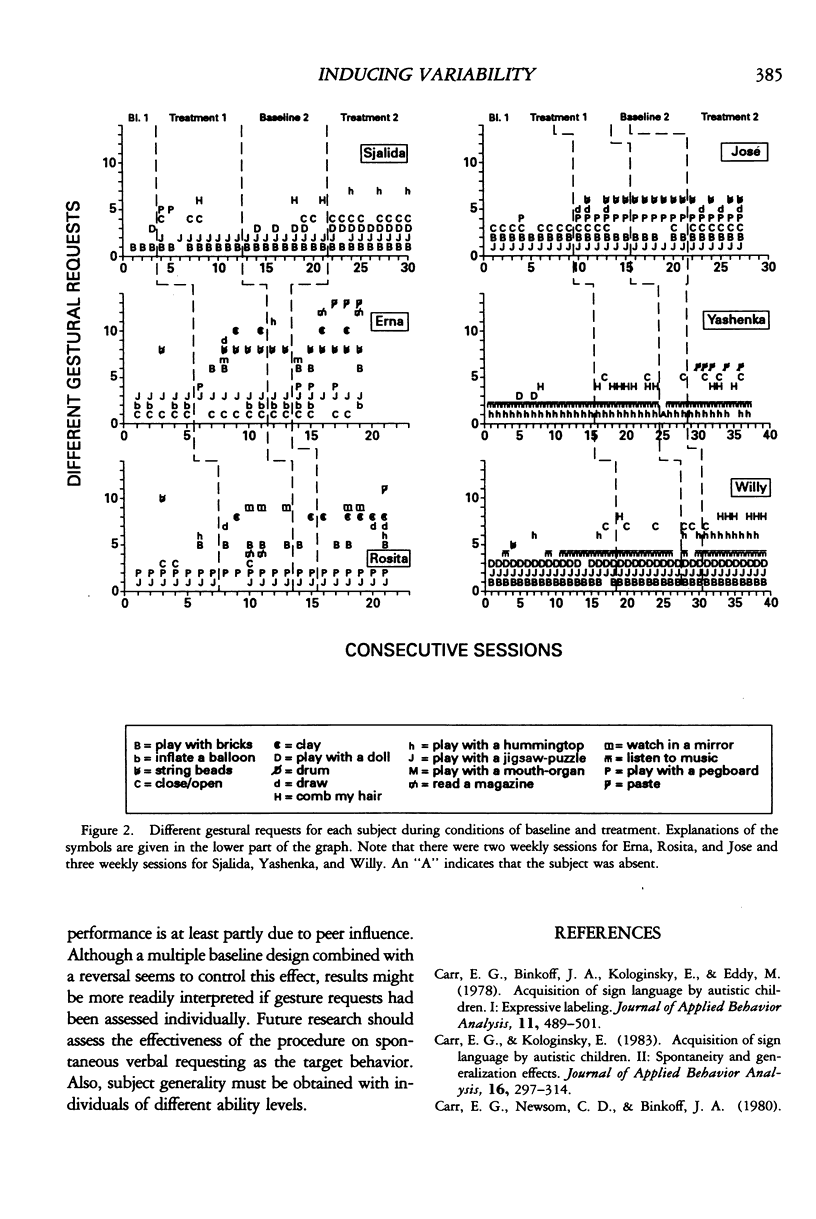
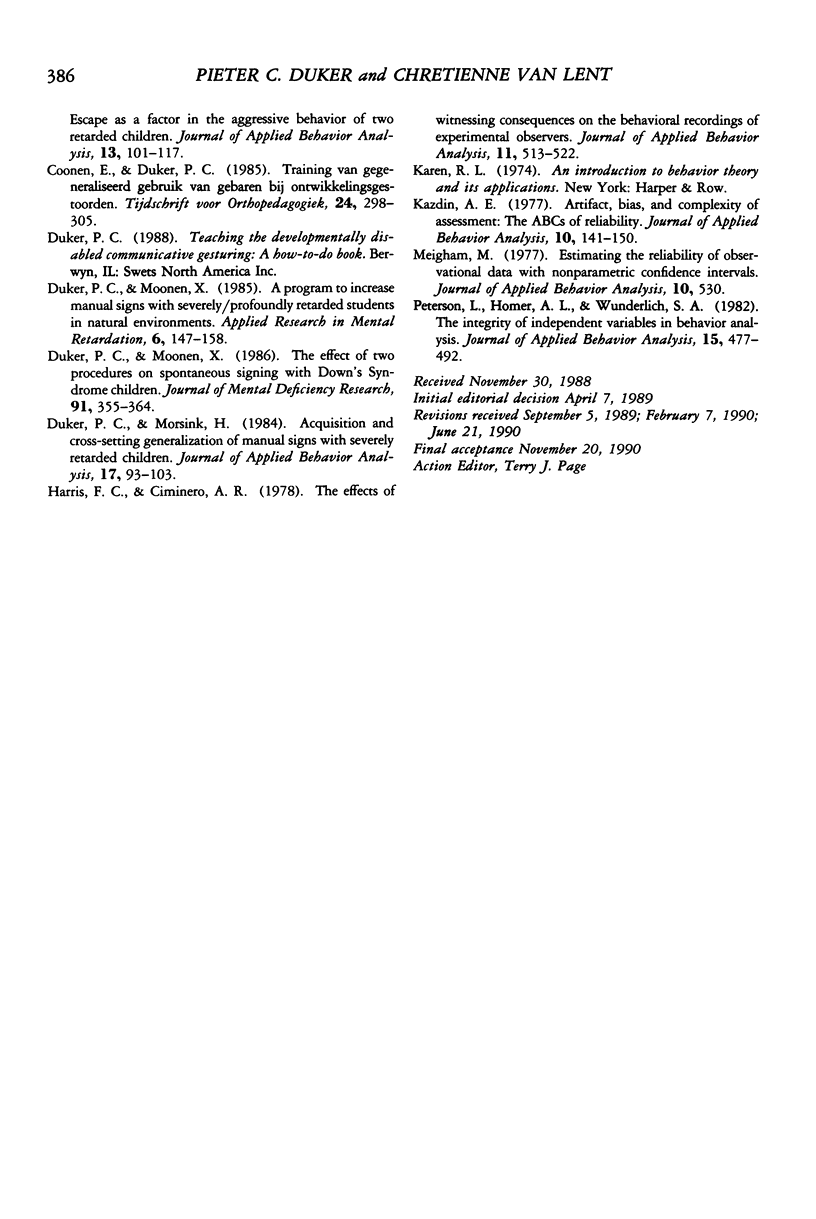
Selected References
These references are in PubMed. This may not be the complete list of references from this article.
- Carr E. G., Binkoff J. A., Kologinsky E., Eddy M. Acquisition of sign language by autistic children. I: Expressive labelling. J Appl Behav Anal. 1978 Winter;11(4):489–501. doi: 10.1901/jaba.1978.11-489. [DOI] [PMC free article] [PubMed] [Google Scholar]
- Carr E. G., Kologinsky E. Acquisition of sign language by autistic children. II: Spontaneity and generalization effects. J Appl Behav Anal. 1983 Fall;16(3):297–314. doi: 10.1901/jaba.1983.16-297. [DOI] [PMC free article] [PubMed] [Google Scholar]
- Ducker P. C., Moonen X. M. The effect of two procedures on spontaneous signing with Down's syndrome children. J Ment Defic Res. 1986 Dec;30(Pt 4):355–364. doi: 10.1111/j.1365-2788.1986.tb01331.x. [DOI] [PubMed] [Google Scholar]
- Duker P. C., Moonen X. M. A program to increase manual signs with severely/profoundly mentally retarded students in natural environments. Appl Res Ment Retard. 1985;6(2):147–158. doi: 10.1016/s0270-3092(85)80067-9. [DOI] [PubMed] [Google Scholar]
- Duker P. C., Morsink H. Acquisition and cross-setting generalization of manual signs with severely retarded individuals. J Appl Behav Anal. 1984 Spring;17(1):93–103. doi: 10.1901/jaba.1984.17-93. [DOI] [PMC free article] [PubMed] [Google Scholar]
- Harris F. C., Ciminero A. R. The effect of witnessing consequences on the behavioral recordings of experimental observers. J Appl Behav Anal. 1978 Winter;11(4):513–521. doi: 10.1901/jaba.1978.11-513. [DOI] [PMC free article] [PubMed] [Google Scholar]
- Kazdin A. E. Artifact, bias, and complexity of assessment: the ABCs of reliability. J Appl Behav Anal. 1977 Spring;10(1):141–150. doi: 10.1901/jaba.1977.10-141. [DOI] [PMC free article] [PubMed] [Google Scholar]
- Peterson L., Homer A. L., Wonderlich S. A. The integrity of independent variables in behavior analysis. J Appl Behav Anal. 1982 Winter;15(4):477–492. doi: 10.1901/jaba.1982.15-477. [DOI] [PMC free article] [PubMed] [Google Scholar]


